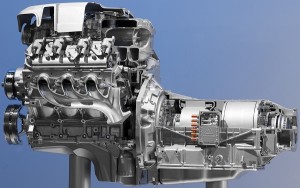16 Jun Genetic Cross-Pollination
Cross Pollination
 Many approaches exist for simulating intelligent behavior on computers. In the past, the most popular approach was to focus on developing a technique and applying it to a problem. Most basic research has focused on single paradigms and their properties. Sometimes, however, in domains where multiple approaches to problem solving are possible, some combination of approaches is desirable.
Many approaches exist for simulating intelligent behavior on computers. In the past, the most popular approach was to focus on developing a technique and applying it to a problem. Most basic research has focused on single paradigms and their properties. Sometimes, however, in domains where multiple approaches to problem solving are possible, some combination of approaches is desirable.
We now have many mature technologies for inference, knowledge acquisition and maintenance, explanation, and other components of intelligent systems. As a result, application developers and even basic research concerns have begun combining multiple approaches or techniques into single problems. Cross-pollination yields hybrids, and hybrids often exhibit more desirable characteristics than either of the progenitors. On the other hand, incompatible pollins, or pollins that encounter each other in unfavorable circumstances, may yield less than optimal results or no results at all. Even the most prudent geneticists use the experimental technique in which hypotheses are tested with experiments and observations that support empirical and experimental observations.
| Understanding Context Cross-Reference |
|---|
| Click on these Links to other posts and glossary/bibliography references |
|
|
|
| Prior Post | Next Post |
| Information Transformation | |
Definitions |
References |
| Stanford on A-Star Search | |
| AI Junkie on Genetic Algorithms | |
| Haley 2008 |
 The most interesting and, occasionally, the most important part of designing hybrid AI systems is establishing effective links between diverse AI techniques.
The most interesting and, occasionally, the most important part of designing hybrid AI systems is establishing effective links between diverse AI techniques.
Technique #1: A-Star Search or Genetic Algorithm
The effectiveness of the linkage between two AI techniques may be the most critical element of the success of an attempt to model human cognitive functions and/or activities using automata.
Technique #2: Backward Chaining Inference or Neural Networks
Linkages in Hybrid Systems
In the illustration of simple flow-definition options below, each approach is assigned a number (A1-A3). In the illustration of their interaction, the different approaches are simply viewed as processes, and the communication or transfer of data (or possibly, functions) between the processes represents one way of looking at their interaction.
If telegraphic communication of data were the mode of interaction, then presumably the primary task for the designer would be to teach some part of each of the communicating modules to understand Morse code. Unfortunately, this metaphor collapses when it becomes apparent that the receiving process needs to know the answers to these questions as well:
- What did the sending process do to the data?
- What is the reliability of the data or intermediate results?
- How can the explanation of the results be dovetailed into the rest of the story?
If we choose to build an intelligent system with hybrid approaches, we must evaluate the answers to these questions before we begin to design the system! Section 9 shows how object-centered design facilitates the evaluation process.
| Click below to look in each Understanding Context section |
|---|
| Intro | Context | 1 | Brains | 2 | Neurons | 3 | Neural Networks |
| 4 | Perception and Cognition | 5 | Fuzzy Logic | 6 | Language and Dialog | 7 | Cybernetic Models |
| 8 | Apps and Processes | 9 | The End of Code | Glossary | Bibliography |









